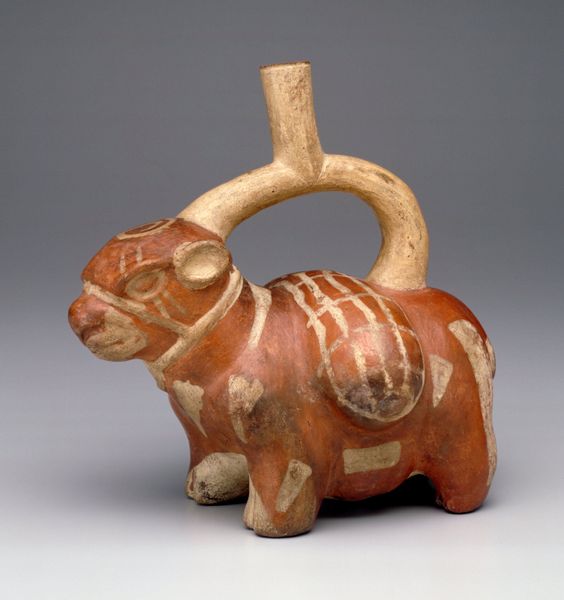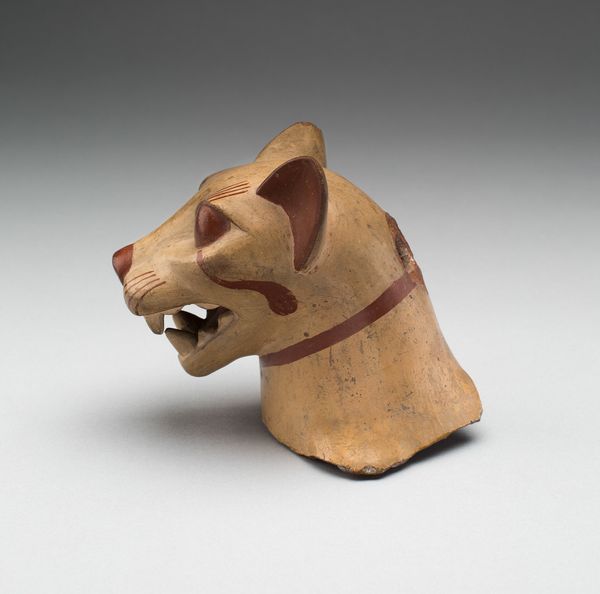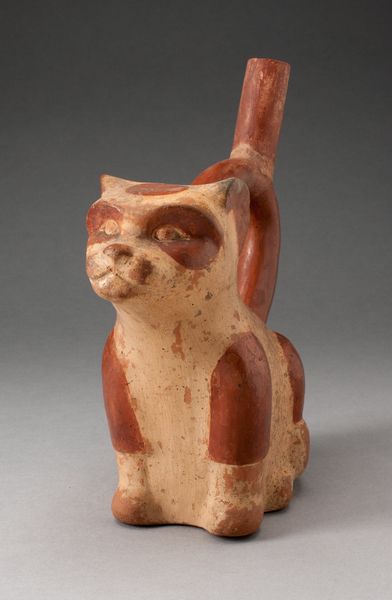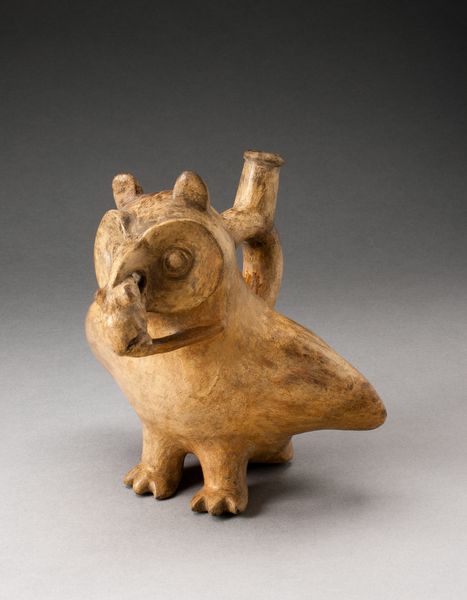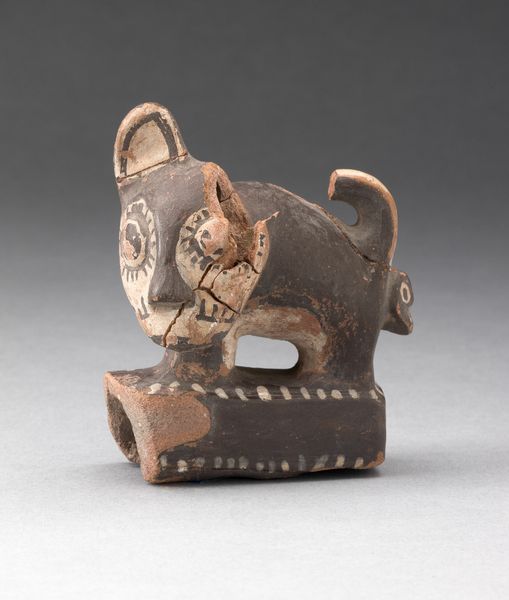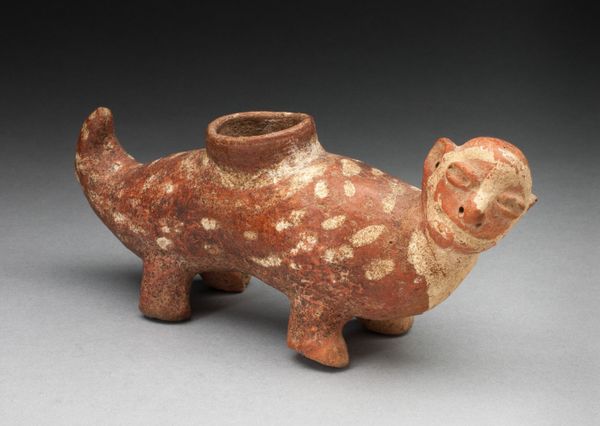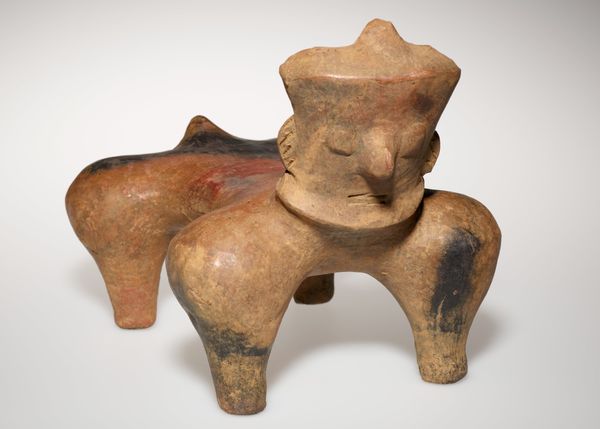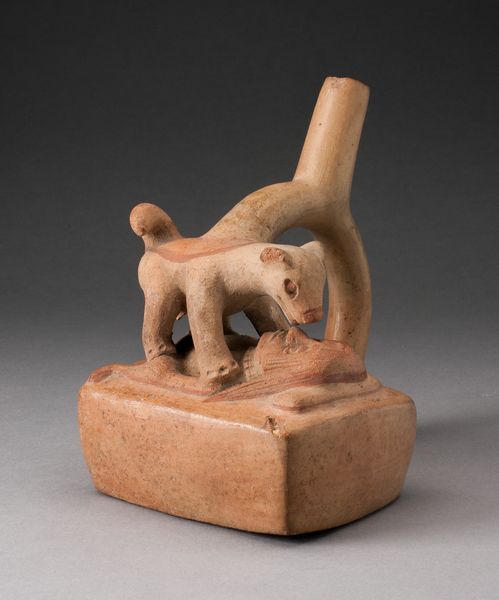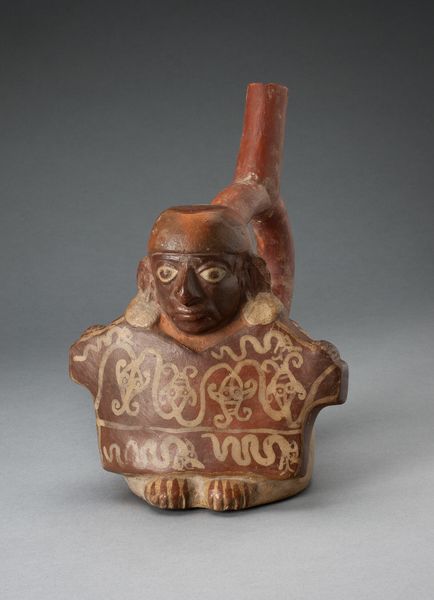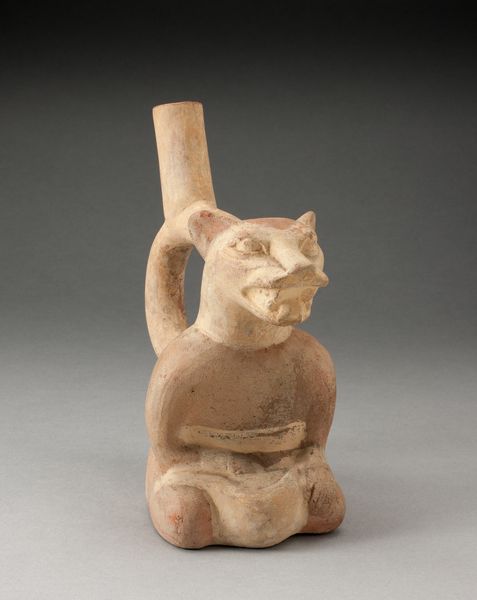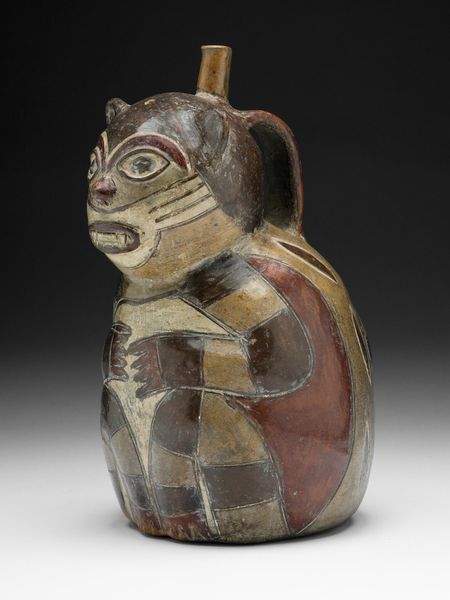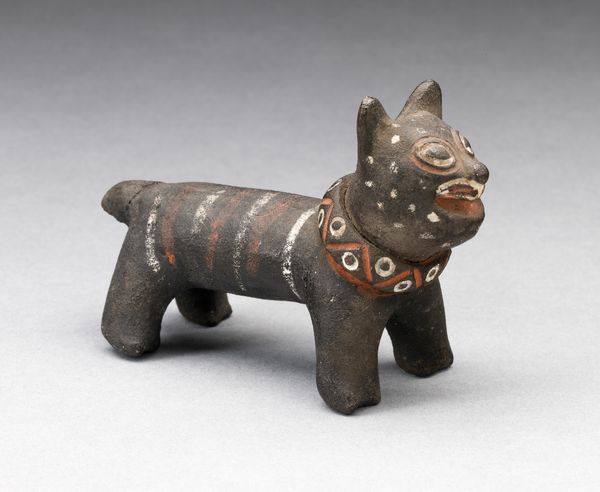
Single Spout and Bridge Vessel in the Form of a Dog Gnawing a Bone Possibly 700 - 1000
0:00
0:00
ceramic, sculpture, terracotta
#
ceramic
#
figuration
#
vessel
#
sculpture
#
terracotta
#
indigenous-americas
Dimensions: 11.4 × 16.2 cm (4 1/2 × 6 3/8 in.)
Copyright: Public Domain
Editor: This fascinating ceramic piece, "Single Spout and Bridge Vessel in the Form of a Dog Gnawing a Bone," dates from approximately 700 to 1000, made by the Tiwanaku people. What strikes me is the contrasting smooth, rounded form of the animal with the angular spout and bridge. How do you interpret this interplay of shapes? Curator: Indeed. Consider the dog's body; it’s an exercise in simplification, almost geometric abstraction. Note how the artist has reduced the canine form to its most essential volumes. Now, contrast this with the deliberate addition of the spout and bridge. Do these elements enhance or disrupt the dog's sculptural form? Editor: I suppose they both enhance and disrupt. They add functionality while interrupting the pure form of the dog. It’s interesting that you highlight the reduction of form— what does this choice emphasize in your opinion? Curator: The reductive nature forces us to focus on the inherent plasticity of the clay itself and on the subtle relationships between positive and negative space. Observe how the arch of the bridge echoes the implied curve of the dog’s back, yet remains independent of it. Editor: So, it's less about realistic representation and more about the formal relationships created through material and shape. The painted surfaces seem relevant, as well? Curator: Precisely. The limited color palette further emphasizes form. The careful demarcation of light and dark areas defines the dog’s musculature and posture, without recourse to illusionistic shading. Editor: Fascinating. It is much more about exploring fundamental relationships than portraying the image of a dog. Thanks, I really appreciate that perspective. Curator: My pleasure. A close examination reveals the sophistication within what might initially appear to be a simple form.
Comments
No comments
Be the first to comment and join the conversation on the ultimate creative platform.
